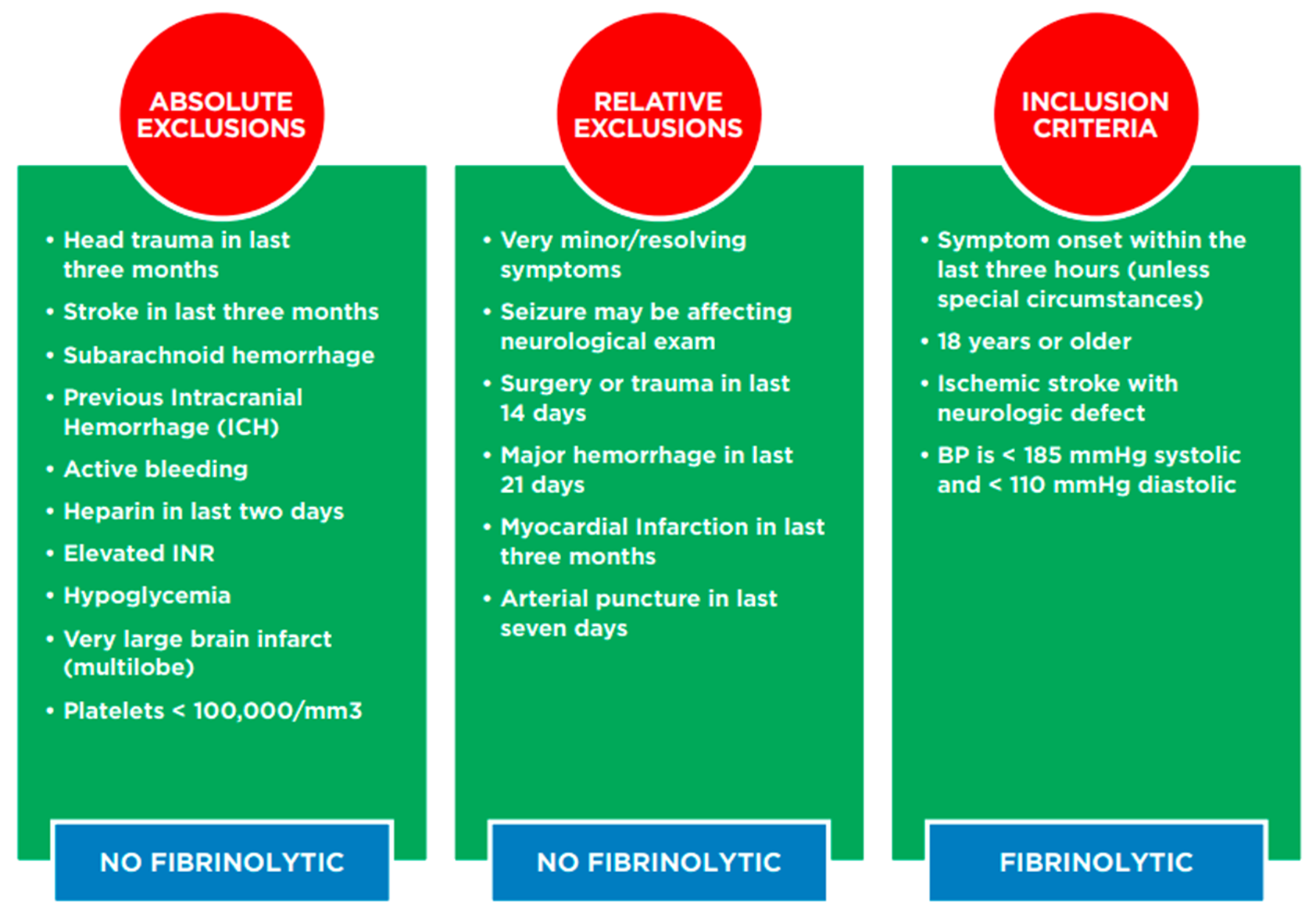Acute Stroke (Sudden Stroke) Signs & Symptoms
When blood flow becomes abnormal to the point that flow to the brain is interrupted, this event is what leads to a stroke. There are two known variations of a stroke: ischemic and hemorrhagic. In the case of ischemic stroke, a clot forms in one of the brain’s blood vessels, blocking the flow through the vessel. In a hemorrhagic stroke, a blood vessel in the brain erupts and spews out blood into the brain tissue. Ischemic and hemorrhagic stroke account for 87% and 13% of total incidents, respectively. Generally, the symptoms of both types of strokes are similar. It is the treatments that are different from each other.
Symptoms of Stroke
- Sudden weakness in the leg, face, arm
- Problems with vision
- Confusion
- Vomiting or nausea
- Trouble forming words with communication
- Locomotive problems such as inability to walk properly
• Use four liters per minute nasal cannula; titrate as needed to keep oxygen saturation to 94-99 percent.
• Check glucose; hypoglycemia can mimic acute stroke
• Determine precise time of symptom onset from patient and witnesses
• Determine patient deficits (gross motor, gross sensory, cranial nerves)
• Institute seizure precautions
• At least two large gauge IVs in each antecubital fossa.
• Take to stroke center if possible
Figure 42
Within 10 minutes of arrival, a collective team of physicians and other experts should immediately assess the patient with suspected stroke at the emergency department (ED).
Within 25 minutes, the CT scan should be completed and should be assessed within the patient’s first 45 minutes in the hospital.
The region of the brain that is affected by the stroke determines the clinical signs, due to the decreased or blocked blood flow in certain areas. Certain symptoms may include having difficulty walking and with balance; a loss of vision; slurred and broken speech; facial droop; severe change of consciousness; headaches and vomiting; and numbness or weakness in the leg, arm, or face. The symptoms that may show depend entirely on the affected cerebral artery; not all symptoms may be found to be present.
In diagnosing whether or not a stroke is present in a patient, the Cincinnati Prehospital Stroke Scale (CPSS) is used if certain physical findings are seen, such as broken and abnormal speech, arm drift, or facial droop. There is a 72% probability of an ischemic stroke present in a patient that is displaying even one of these three findings. The probability of an acute stroke rises to more than 85% if all three findings are observed. It is recommended to become proficient with the tool, FAST, used by the rescuers’ EMS system. The usage and training of these screening tools can be facilitated by practice and mock scenarios.
FAST: Face Drooping, Arm Weakness, Speech, and Time Symptoms Started
Individuals with ischemic stroke who are not candidates for fibrinolytic therapy should receive aspirin unless contraindicated by true allergy to aspirin. All individuals with confirmed stroke should be admitted to Neurologic Intensive Care Unit if available. Stroke treatment includes blood pressure monitoring and regulation per protocol, seizure precautions, frequent neurological checks, airway support as needed, physical/occupational/speech therapy evaluation, body temperature checks, and blood glucose monitoring. Individuals who received fibrinolytic therapy should be followed for signs of bleeding or hemorrhage. Certain individuals (age 18 to 79 years with mild to moderate stroke) may be able to receive tPA (tissue plasminogen activator) up to 4.5 hours after symptom onset. Under certain circumstances, intra-arterial tPA is possible up to six hours after symptom onset. When the time of symptom onset is unknown, it is considered an automatic exclusion for tPA. If time of symptom onset is known, the National Institute of Neurological Disorders and Stroke (NINDS) has established the time goals below.
- The expert’s general assessment should be conducted
- An urgent CT scan without contrast must be ordered
- Perform CT scan without contrast
- Neurological assessment
- Within 45 minutes, CT scan must be read
- Evaluate criteria, and apply fibrinolytic therapy or clot buster
- Within 3 to 4.5 hours in some cases of symptom onset, use fibrinolytic therapy
- Admission to stroke unit
Figure 43
- A bedside swallow screening is required before anything is swallowed, whether food or medication. Upon admission, all acute stroke individuals are automatically considered NPO.
- Patients with suspected strokes must be assessed within 10 minutes of arrival in the emergency department by the stroke team and other experts.
- Within 10-25 minutes, the CT scan must be completed, and within 45 minutes it must be read.
Emergency Department Staff
| Complete EMS Care | Targeted Stroke Evaluation | Establish Symptom Onset Time | CT Scan of Brain Stat | Obtain 12-Lead ECG | Check Glucose and Lipids | Contact Stroke Team |
Ischemic
(NIH Stroke Scale)
Hemorrhagic

Figure 44
